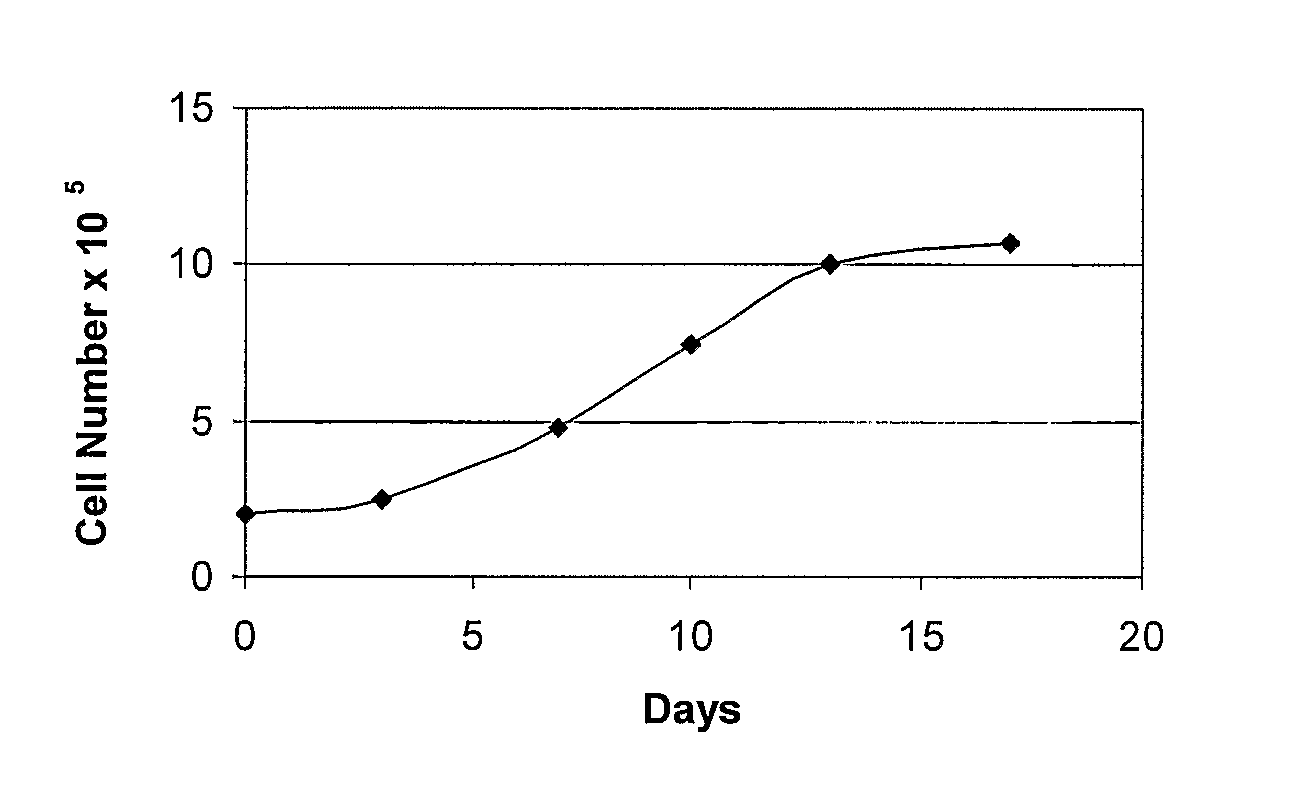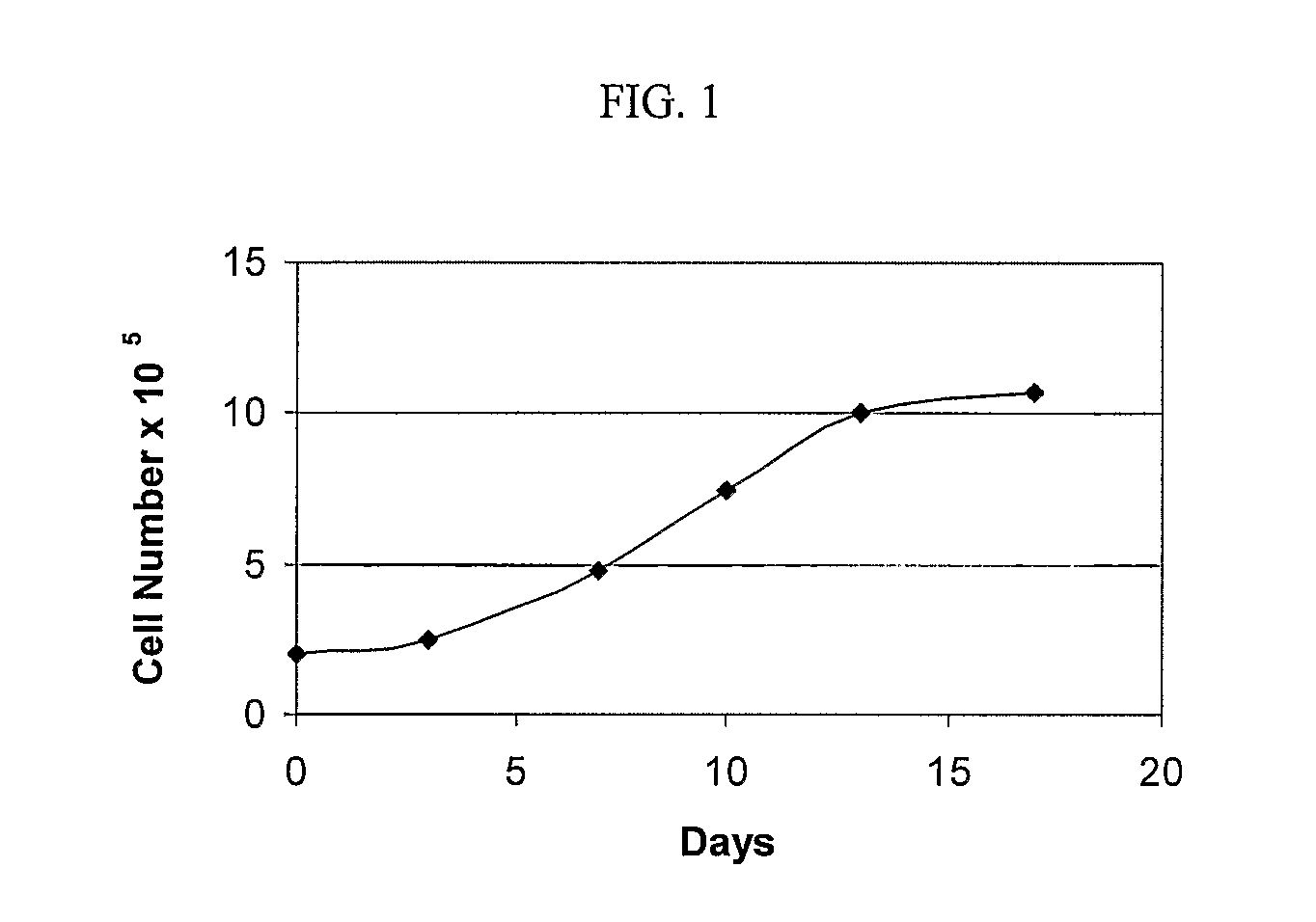Materials and Methods for Minimally-Invasive Administration of a Cell-Containing Flowable Composition
a flowable composition and cell technology, applied in the field of materials and methods for minimally-invasive administration of a cell-containing flowable composition, can solve the problems of no better atherectomy devices, limited long-term effectiveness of angioplasty, vascular bypass grafts and even organ transplantation, and the rise in the rate of restenosis from 10 to 47%
- Summary
- Abstract
- Description
- Claims
- Application Information
AI Technical Summary
Benefits of technology
Problems solved by technology
Method used
Image
Examples
example 1
Animal Vascular Intervention Study
[0129]This example provides experimental protocols for testing and using a preferred embodiment of the present invention to reduce the incidence of clinical sequelae associated with vascular intervention in animal test subjects. Using standard surgical procedures, an injury to the interior lumen surface is induced by percutaneous balloon angioplasty and placement of a stent performed on the femoral arteries. The implantable flowable composition of the present invention is then disposed in the perivascular space adjacent the site of angioplasty and stent treated vessel; the details of one exemplary procedure are set forth below. As described earlier, the placement and formulation of implantable flowable composition can be varied.
[0130]Specifically, the study includes 26 porcine test subjects undergoing percutaneous balloon angioplasty and stent implantation. Conventional percutaneous balloon angioplasty and stent implantation procedures will be perfo...
example 2
Human Vascular Intervention Study
[0150]This example provides experimental protocols for testing and using a flowable composition comprising engrafted vascular endothelial cells and a biocompatible matrix in particulate form to reduce the incidence of clinical sequelae associated with vascular intervention in human clinical test subjects. Using standard surgical procedures, a physician-ordered percutaneous balloon angioplasty and stenting is performed to alleviate a clinical condition. Implantable flowable composition is then disposed in the perivascular space at, adjacent or in the vicinity of the site of angioplasty and stenting; the details of one exemplary procedure are set forth below. As described earlier, the placement and formulation of the implantable flowable composition can be varied by the skilled practitioner in a routine manner.
[0151]Specifically, the study includes human test subjects undergoing percutaneous balloon angioplasty and stenting in a peripheral limb. Conven...
example 3
Animal Pelvic Readhesion Study
[0157]This example provides experimental protocols for testing and using a flowable composition comprising a biocompatible particulate matrix and engrafted endothelial cells or endothelial-like cells to reduce the incidence of adhesions in the pelvis and its surrounds in animal test subjects. An experimental rat model (a modified uterine horn model, J. Invest. Surg. 7:409-15 (1994)) will be utilized to study the treatment of post-operative adhesions after tubal reconstructive surgery using the implantable flowable composition and methods of the present invention. The uterine horn will be scratched on both sides and sutured together. After 14 days, during relaparotomy, the tight connection between the two sides of the sutured uterine horn will be cut. The implantable flowable composition of the present invention will be applied to one side of the uterine horn and surrounds as described above. The other side of the uterine horn will not receive the implan...
PUM
| Property | Measurement | Unit |
|---|---|---|
| diameter | aaaaa | aaaaa |
| diameter | aaaaa | aaaaa |
| humidity | aaaaa | aaaaa |
Abstract
Description
Claims
Application Information
 Login to View More
Login to View More - R&D
- Intellectual Property
- Life Sciences
- Materials
- Tech Scout
- Unparalleled Data Quality
- Higher Quality Content
- 60% Fewer Hallucinations
Browse by: Latest US Patents, China's latest patents, Technical Efficacy Thesaurus, Application Domain, Technology Topic, Popular Technical Reports.
© 2025 PatSnap. All rights reserved.Legal|Privacy policy|Modern Slavery Act Transparency Statement|Sitemap|About US| Contact US: help@patsnap.com


